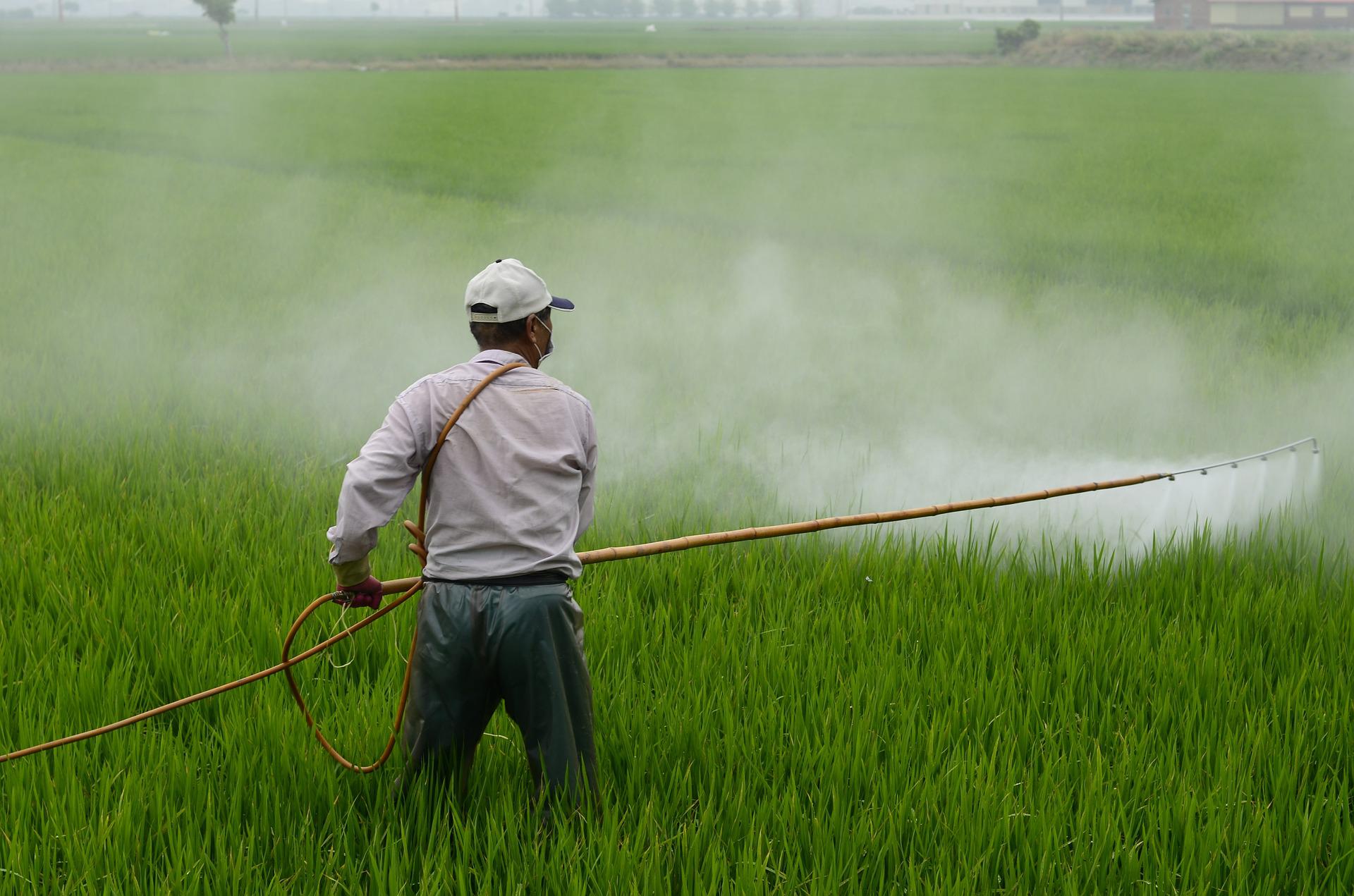Jean Shen is a law student in the Harvard Law School Food Law & Policy Clinic and a guest contributor to this blog.
Exposure to pesticides is an inescapable reality that endangers the health of not only farmworkers, but also their children and families. Over 1 billion pounds of pesticides are applied to crops each year in the United States—as the climate grows warmer and the growing season gets longer, leading to greater proliferation of weeds and insect pests, this amount is likely to continue to increase.
Farmworkers come into contact with pesticides primarily through skin contact and inhalation, which can occur through direct contact, aerial drift, and residues on the crop or soil. Additionally, many farmworkers live with their families in agricultural communities in close proximity to the fields where they work, resulting in further pesticide exposure because of aerial drift into homes, schools, or playgrounds, as well as pesticide residue that workers inadvertently bring home on their clothing or tools.
Children also suffer additional exposures because they are often brought to the fields with their parents if they are too young for school, eat produce from the fields directly or soon after harvest, and sometimes work alongside their family members in the fields. The children of farmworkers are particularly vulnerable to pesticide exposures for several reasons: their smaller size means that they absorb pesticides at a higher rate than adults, their bodies are susceptible during development, and they have a reduced ability to break down and eliminate chemicals.
Research shows that “exposure to pesticides showed a two-fold greater risk of developing or exacerbating asthma in children and adolescents.” Mexican-American children normally have low asthma rates compared to other ethnic groups; however, in California’s San Joaquin Valley, one of the world’s wealthiest and most productive agricultural regions, Mexican-American children have a higher prevalence rate of asthma of 16.4%, compared to the national average of 11.6%. Children of farmworkers often have no primary care provider, and rely on trips to the emergency room to receive medical attention for their asthma. Suffering from asthma causes children to miss many days of school and miss out on extracurricular opportunities such as playing sports.
Comprehensive reform is necessary to address the issue of pesticide exposure, which, realistically, may not be fully eliminated, but the dangers of which cannot continue to be ignored. The Worker Protection Standard (WPS), the current federal regulations issued by the EPA to protect farmworkers from pesticide-related hazards, was most recently updated in 2015. One of the major revisions made in 2015 was the “application exclusion zone” (AEZ) rule, requiring agricultural employers to keep everyone out of the AEZ while applying pesticides, with safety zones extending across property lines. In 2020, under the Trump administration, the EPA proposed loosening the rule to end AEZs at the edges of farms, which would have increased farmworker exposure to pesticides, because farmers would no longer be mandated to pause spraying if they saw individuals on neighboring property. Fortunately, there has been no implementation of the 2020 AEZ rule. However, farmworkers are still susceptible to pesticide exposure during spraying: the applicator may not see people in the AEZ due to obstructions, and might inadvertently expose workers, particularly on nearby properties. The WPS should be updated to increase protections for farmworkers, beyond designating safety zones.
Another 2015 WPS revision prohibits children under 18 from handling pesticides. Although this change was regarded as an improvement, since the proposed minimum age was 16, it fails to account for the realities of children’s pesticide exposure. Even if they are not handling or applying pesticides themselves, children of farmworkers who work alongside their parents and live next to farms are nonetheless unable to escape high levels of pesticide exposures. The WPS could offer greater protection to the children of farmworkers by designating no-spray zones in the vicinity of farmworkers’ homes, schools, and recreational areas, in order to reduce children’s exposures in a meaningful way.
Overall, the WPS should be further revised with an emphasis on preventative measures to improve worker safety regarding pesticides. Through reform, we can better protect farmworkers and their families and mitigate the health harms that they suffer as a result of pesticide exposure.
FBLE’s Recommendations concerning Farmworkers for the 2023 Farm Bill may be found on our 2023 Farm Bill page.
The views and opinions expressed on the FBLE Blog are those of the authors and do not necessarily reflect the official policy or position of FBLE. While we review posts for accuracy, we cannot guarantee the reliability and completeness of any legal analysis presented; posts on this Blog do not constitute legal advice. If you discover an error, please reach out to contact@farmbilllaw.org.


